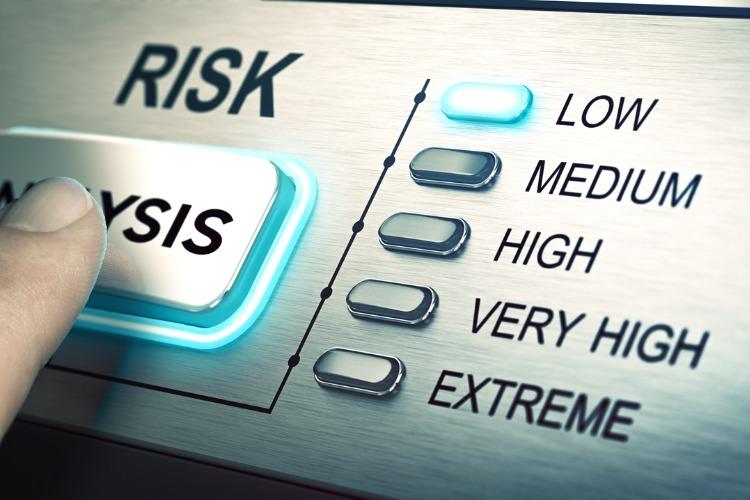How Cybersecurity Risk Assessments Will Need to Evolve for 2025
2025 is drawing near, and the cybersecurity scene is changing quickly. Organizations must adapt how they undertake cybersecurity risk assessments in tandem with the ongoing evolution of technology and the escalating sophistication of cyber-attacks. Obviously, consulting cybersecurity service experts can provide valuable insights and strategies to navigate these challenges effectively. But with due diligence, in order to address the difficulties of the near future, cybersecurity risk assessments will need to change in ten key areas, as this essay examines.
AI-Driven Threats and Defenses - Artificial Intelligence (AI) presents a dilemma for the cybersecurity industry. AI-powered solutions are becoming essential for identifying and reducing cyberthreats, on the one hand. However, fraudsters are using AI to automate cyberattacks, carry out increasingly complex phishing schemes, and create malware that may elude conventional threat detection techniques. By 2025, risk assessments will have to take into consideration the increasing usage of AI by attackers as well as defenders, assessing the strength of defenses against AI threats.
Supply Chain Risks - Supply chain risks have increased due to the growing reliance on outside vendors for digital software and infrastructure. Supply chains are susceptible to cyberattacks, as evidenced by well-publicized events like the SolarWinds hack. By 2025, a bigger focus on analyzing vendors' and suppliers' security policies will be required for cybersecurity risk assessments. To make sure that their supply chains do not end up as weak points in their defense plan, organizations will need to carefully examine the cybersecurity precautions taken by their partners.
Resiliency and Business Continuity - The capacity to keep operations running smoothly in the event of a cyberattack is becoming more and more crucial. A lack of resilience can have disastrous effects as assaults get more complex. In 2025, risk assessments will need to consider the organization's capacity for rapid recovery in addition to the probability of a successful assault. This include evaluating incident response procedures, backup tactics, and the general resilience of IT infrastructure. A thorough risk assessment will pinpoint areas that require improvement and take into account how possible disruptions can affect crucial business activities.
Insider Threats - Organizations are at serious danger from insider threats, whether they are deliberate or unintentional. Insider risks have become more likely as remote work becomes increasingly common. By 2025, insider threat identification and mitigation will require a greater emphasis in risk assessments. This entails keeping an eye on employee conduct in addition to putting in place tools and rules that can identify and stop internal organization-sourced data breaches and illegal access.
Evolving Regulatory Landscape - The regulatory environment changes along with the evolution of cyber dangers. To handle new threats, governments and regulatory agencies are always amending cybersecurity laws. By 2025, regulatory compliance requirements will need to be thoroughly analyzed as part of cybersecurity risk assessments. Businesses need to stay up to date on any modifications to cybersecurity legislation and make sure that their security protocols adhere to the most recent guidelines and industry standards. Regulation adherence is crucial to any risk assessment since noncompliance can lead to serious penalties.
Cloud Security Challenges - The widespread adoption of cloud computing has introduced new security challenges. As more businesses move their operations to the cloud, risk assessments must evaluate the security of cloud environments. This includes assessing the effectiveness of cloud service providers' security measures, as well as the organization's own cloud security policies. By 2025, cloud security will be a critical focus area for risk assessments, particularly as cybercriminals continue to target cloud-based assets.
Increased Use of Zero Trust Architecture - As a security framework, the Zero Trust model is becoming more popular. It makes the assumption that attacks might come from both the inside and the outside of the network. To reduce the danger of cyberattacks, more enterprises will implement Zero Trust architectures by 2025. Risk analyses will have to analyze how well Zero Trust implementations work, making sure they offer complete defense against both internal and external threats. This will entail evaluating continuous monitoring procedures, identity and access management (IAM), and network segmentation.
The Rise of Quantum Computing - Quantum computing, while still in its early stages, poses a potential threat to current cryptographic methods. As quantum computers become more advanced, they could potentially break widely-used encryption algorithms, compromising sensitive data. Risk assessments in 2025 must consider the implications of quantum computing on cybersecurity. Organizations will need to evaluate their encryption strategies and begin exploring quantum-resistant cryptographic solutions to safeguard their data against future threats.
Supply Chain Resilience - The idea of supply chain resilience in general will gain importance beyond cybersecurity. Cybersecurity risk assessments must take into account the potential effects that supply chain disruptions—whether brought on by cyberattacks or by other factors—may have on the overall risk profile of a company. This entails gauging the supply chain's potential for bottlenecks, determining how resilient providers are, and creating backup plans to keep things running in case of emergencies.
Behavioral Threat Detection - Traditional threat detection methods often rely on identifying known malware signatures or patterns of activity. However, cybercriminals are increasingly using techniques to evade these methods, such as polymorphic malware that changes its code to avoid detection. By 2025, cybersecurity risk assessments will need to incorporate advanced behavioral threat detection capabilities. These techniques analyze the behavior of users and systems to identify anomalies that could indicate a cyberattack. This approach allows for the detection of previously unknown threats, making it a crucial component of a modern cybersecurity strategy.
Conclusion
Cybersecurity risk assessments will need to change as 2025 approaches in order to take into account the increasing complexity and sophistication of cyber threats. The landscape is changing quickly, from AI-driven attacks to quantum computing, and businesses need to keep up with these advancements to safeguard their assets and ensure business continuity. Organizations may enhance their readiness for future problems and sustain the effectiveness of their cybersecurity policies by including these ten crucial areas into their risk assessments.

